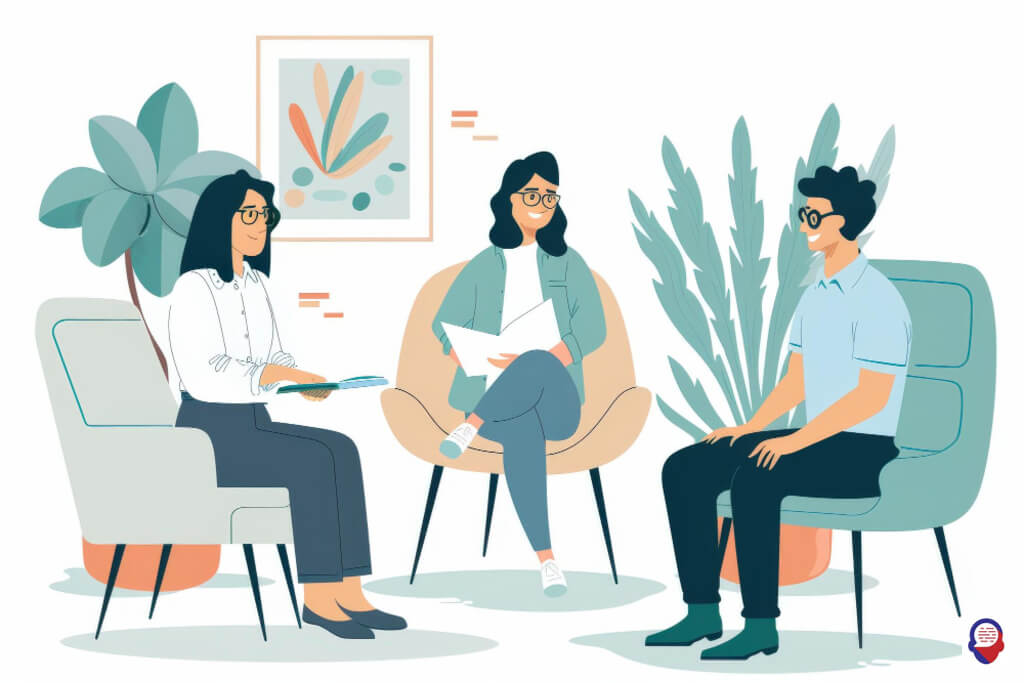Unlock Your Potential: The Ultimate Guide to Person-Centred Therapy
Have you ever felt misunderstood? Or perhaps you’ve felt that the answers to your problems were just out of reach, locked somewhere deep inside you. Imagine a form of therapy that doesn’t try to fix you, but instead, helps you unlock the strength you already possess. This is the world of person-centred therapy, a revolutionary approach that places you, the client, firmly in the driver’s seat of your own journey toward healing and growth.
This isn’t about a therapist telling you what to do or interpreting your every thought. It’s a collaborative, respectful partnership. It’s built on the profound belief that every single person has an innate capacity to grow, to heal, and to move towards a more fulfilling life. We are going to explore this powerful and humane approach, delving into its core ideas, its practical application, and its lasting impact on modern psychology and beyond. Welcome to a therapy that sees you, hears you, and trusts you.

What Is the Core Idea Behind Person-Centred Therapy?
The core idea is that every individual possesses an inherent "actualizing tendency," a natural drive towards growth, self-understanding, and positive change. This therapeutic model, originally called client-centred therapy, operates on the fundamental trust that you are the ultimate expert on your own life. The therapist’s role is not to diagnose, direct, or offer solutions, but to create a specific kind of supportive environment where your own wisdom can emerge.
This approach was pioneered by the American psychologist Carl Rogers in the 1940s and 1950s. It was a radical departure from the psychoanalytic and behavioural models that dominated the field at the time. Rogers challenged the traditional, hierarchical view of the therapist as an all-knowing authority figure. He believed that the therapeutic relationship itself was the primary agent of change.
By shifting the terminology from "patient" to "client," Rogers emphasized the autonomy and capability of the individual seeking help. A "patient" is someone who is ill and passively receives treatment. A "client," however, is someone who actively engages a service, retaining their power and responsibility. This simple change in language reflects a monumental shift in philosophy, one that empowers individuals and honours their unique journey.

How Does This Therapy Actually Work in a Session?
It works by fostering a unique therapeutic relationship defined by specific conditions that allow the client to feel safe, understood, and accepted. A person-centred session is not about the therapist performing techniques on the client. Instead, the entire process is about the therapist embodying a certain way of being with the client, creating a psychological space where the client can safely explore their feelings, experiences, and sense of self.
The focus is on the here and now, on your present experience of your thoughts and emotions. The therapist listens, not just to your words, but to the meaning and feelings behind them. They reflect your feelings back to you, helping you to clarify them for yourself. This process, known as empathic listening, helps you to hear yourself more clearly and connect more deeply with your own inner world. It is through this profound sense of being heard and understood that change begins to happen.

What Are the Three Core Conditions?
The three core conditions, which are the essential ingredients for therapeutic change, are unconditional positive regard, empathy, and congruence. Carl Rogers proposed that if a therapist can genuinely provide these three conditions, and if the client can perceive them, then a positive therapeutic process will naturally unfold. These are not techniques to be applied, but rather attitudes to be lived out by the therapist within the relationship.
These conditions work together synergistically. When you feel completely accepted (unconditional positive regard), you feel safe enough to be vulnerable. When you feel truly understood (empathy), you feel less alone in your experience. And when you sense your therapist is being real with you (congruence), you feel able to build the trust necessary for deep exploration.

What Does Unconditional Positive Regard Mean?
Unconditional positive regard means the therapist offers complete acceptance and support for you as a person, without any judgment. It is a genuine sense of caring that is not conditional on your behaviour, feelings, or choices. The therapist values you for who you are, with all your flaws and strengths.
This doesn’t mean the therapist agrees with all of your actions. It means they accept your humanity, your right to have your own feelings, and your fundamental worth as a person. For many people, this may be the first time they have experienced such non-judgmental acceptance. It creates a powerful sense of safety that allows you to explore the parts of yourself you might otherwise keep hidden for fear of rejection or criticism.

How Is Empathy Different from Sympathy?
Empathy is the ability to understand and share the feelings of another person from their perspective, while sympathy is feeling pity or sorrow for someone else’s misfortune. Empathy is feeling with someone, whereas sympathy is feeling for someone. In a therapeutic context, empathy is crucial because it validates the client’s experience without judgment.
A person-centred therapist strives to enter your inner world, to see things through your eyes and to feel things as you feel them. They then communicate this understanding back to you. This is not about saying "I know how you feel." It is about showing, through careful listening and reflection, that they are truly trying to grasp your unique, personal experience. This deep understanding helps you to better understand yourself.

Why Is Congruence or Genuineness So Important?
Congruence is so important because it builds trust and makes the therapeutic relationship real. It means the therapist is authentic, transparent, and genuine, with their inner feelings matching their outer expression. There is no professional facade or air of superiority, what you see is what you get.
When a therapist is congruent, they are a real person in the room with you. This authenticity allows for a much deeper and more honest connection. If a client senses that a therapist is hiding behind a role or is not being genuine, it is almost impossible to build the trust needed for effective therapy. The therapist’s realness gives the client permission to also be real, fostering an environment of honesty and open exploration.

What Is the Theory Behind This Approach?
The theory behind person-centred therapy is that psychological distress arises from a state of "incongruence," a mismatch between a person’s real self and their ideal self. The real self is who you actually are, based on your authentic experiences and feelings. The ideal self is who you think you should be, a concept shaped by societal expectations and the conditions of worth imposed by others.
From a young age, we learn that some parts of us are acceptable while others are not. We receive love and approval conditional on behaving in certain ways, a concept Rogers called "conditions of worth." To maintain a positive self-image and receive affection, we may start to deny or distort our true feelings and experiences. We build an ideal self based on these external conditions.
This creates a gap between our authentic experience and our self-concept. The wider this gap of incongruence, the more anxiety, confusion, and unhappiness we experience. The goal of therapy, therefore, is to help the individual reduce this gap, allowing them to become more congruent, more self-accepting, and more fully themselves.

How Does Therapy Help Bridge This Gap?
Therapy helps bridge this gap by providing the core conditions, which effectively reverse the impact of the "conditions of worth." In the safe, non-judgmental space of the therapeutic relationship, you no longer need to pretend to be someone you are not. Unconditional positive regard from the therapist replaces the conditional regard you may have experienced in life.
As you begin to feel accepted for who you truly are, you can start to let go of the "shoulds" and "oughts" that make up your ideal self. You can safely explore the feelings and experiences you have previously denied or distorted. Through the therapist’s empathy, you begin to develop more empathy for yourself, learning to listen to and trust your own inner voice.
This process allows your real self to emerge and strengthen. As you become more aware and accepting of your authentic experiences, the gap between your real self and your ideal self narrows. This leads to greater self-acceptance, reduced anxiety, and a more integrated, functional, and fulfilling way of living. You become more congruent.

What Are the Modern Implications for Practice Today?
The modern implications of person-centred therapy are vast and profound, extending far beyond the therapy room. Its core principles have become foundational to good practice across many different therapeutic modalities and helping professions. Many therapists, even those trained in other approaches like CBT or psychodynamic therapy, integrate person-centred principles to build a strong therapeutic alliance with their clients.
In healthcare, the concept of "patient-centred care" is a direct descendant of Rogers’ work, emphasizing the importance of treating patients as active partners in their own health decisions. In education, student-centred learning focuses on facilitating a student’s natural curiosity rather than simply transmitting information. In management, leadership styles that emphasize empathy, trust, and employee empowerment draw heavily from person-centred ideas.
The approach is also particularly relevant in our increasingly diverse and multicultural world. Because it does not impose a specific framework or set of beliefs, it is highly adaptable and respectful of different cultural backgrounds, values, and experiences. It honours the individual’s unique worldview, making it a powerful tool for working effectively and ethically with people from all walks of life.
Furthermore, the core conditions have been shown by decades of research to be a key predictor of successful outcomes across almost all types of therapy. The quality of the relationship between the helper and the person being helped is now widely recognized as a critical factor for change. This is perhaps the most enduring legacy of Carl Rogers and person-centred therapy.

Who Can Benefit from Person-Centred Therapy?
This therapy can be beneficial for a very wide range of individuals facing an equally wide range of challenges. Because it focuses on the person rather than a specific diagnosis or problem, its application is incredibly broad. It is often sought by people dealing with depression, anxiety, stress, grief, and low self-esteem.
It is also highly effective for those navigating difficult life transitions, such as relationship breakdowns, career changes, or identity exploration. The non-directive nature of the therapy empowers individuals to find their own way through these challenges, building self-reliance and confidence in their own judgment. It helps people connect with their own values and make choices that are more aligned with their authentic selves.
People who feel "stuck" or have a vague sense that something isn’t right in their life, even if they can’t pinpoint a specific problem, often find this approach very helpful. The exploratory, gentle nature of the process allows underlying issues to surface in a safe and supportive environment. Ultimately, anyone who wants to understand themselves better, improve their relationships, and live a more authentic and fulfilling life can benefit from the person-centred approach.

What Are the Criticisms or Limitations?
One of the main criticisms is that the non-directive nature of the therapy may not be suitable for everyone. For individuals in a state of severe crisis or those with certain mental health conditions who may require more structure and guidance, the pure person-centred approach might feel insufficient. They may need more direct intervention, skills training, or psychoeducation than the model traditionally provides.
Another critique relates to the difficulty of empirical measurement. Because the therapy is so reliant on the unique, subjective quality of the therapeutic relationship and the therapist’s inner attitudes, it is challenging to standardise and study using traditional, quantitative research methods. While research consistently supports the importance of the core conditions, proving that they are sufficient on their own for all clients and all problems is more complex.
Some also argue that the approach may inadvertently place too much emphasis on the individual, potentially overlooking the significant impact of systemic and societal factors like poverty, discrimination, and oppression on a person’s mental health. While a good person-centred therapist would certainly be sensitive to these issues, the core theory focuses primarily on the individual’s internal process of self-actualization. Modern practitioners often integrate a broader, more systemic awareness to address this limitation.
Frequently Asked Questions

Is person-centred therapy the same as client-centred therapy? Yes, essentially. "Client-centred therapy" was the original name Carl Rogers gave his approach. He later changed it to "person-centred therapy" to reflect that its principles could be applied to all human relationships and fields, not just the therapeutic one. Today, the terms are often used interchangeably, with person-centred being the more common and inclusive term.

How long does this type of therapy usually take? There is no set timeline for person-centred therapy, as it is entirely led by the client’s needs and pace. Some people may find benefit in just a few sessions to work through a specific issue, while others may engage in therapy for many months or even years as part of a longer journey of self-exploration and personal growth. The duration is a collaborative decision between you and your therapist.

Will the therapist just sit there and say nothing? No, this is a common misconception. While the therapist will not direct the conversation or give advice, they are a very active participant. Their role involves deep, attentive listening, and they will frequently respond by reflecting your thoughts and feelings, asking clarifying questions, and demonstrating their empathic understanding. The goal is to create a rich dialogue where you feel truly heard and can explore your own mind more deeply.

Can this therapy help with severe mental health conditions? Person-centred principles, especially the development of a strong therapeutic alliance, are helpful for nearly all conditions. However, for some severe and complex mental health issues, such as psychosis or severe personality disorders, a pure person-centred approach may not be sufficient on its own. In these cases, it is often used as a foundational component within a more integrated treatment plan that might also include psychiatric care, medication, or more structured therapeutic models.
At Counselling-uk, we understand that seeking help is a courageous step. Your story is unique, and your journey deserves to be met with respect, warmth, and genuine understanding. We believe, like Carl Rogers, that you hold the key to your own growth. Our mission is to provide a safe, confidential, and professional space where you can find that key. If you are ready to explore your potential and navigate life’s challenges with a trusted professional by your side, we are here to listen. Take the first step towards a more authentic you. Reach out today.


